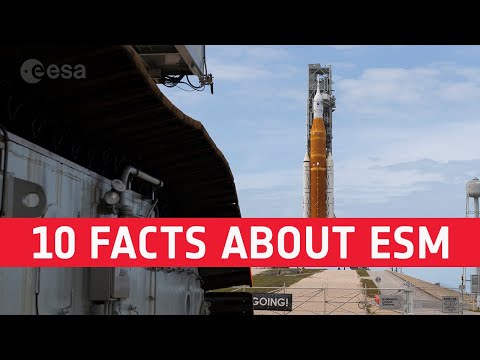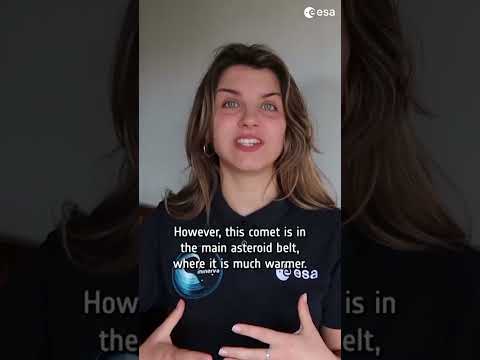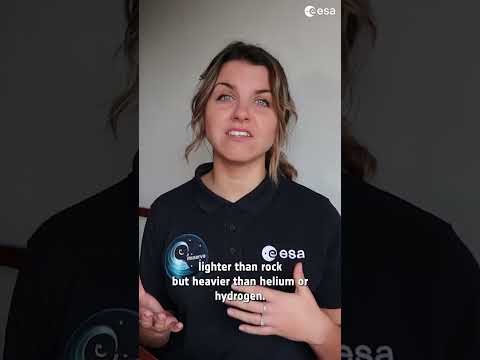Breathing in Space: Say Hello to Artificial Photosynthesis! 🌿🚀
Scientists may have found the solution to creating oxygen in space with artificial photosynthesis!
They are creating devices that mimic plant photosynthesis, to turn sunlight and water into oxygen without the need for electricity.
These devices produce oxygen from water and sunlight using semiconductor materials coated with metallic catalysts.
Scientists believe artificial photosynthesis could even work on Mars, where sunlight is weaker, by using simple solar mirrors to concentrate sunlight and boost oxygen production.
These devices could not only help us explore space but could also bring us closer to meeting our green energy and sustainability goals here on Earth. 🌍💚
📹 ESA – European Space Agency
★ Subscribe: http://bit.ly/ESAsubscribe and click twice on the bell button to receive our notifications.
Check out our full video catalog: http://bit.ly/SpaceInVideos
Follow us on Twitter: http://bit.ly/ESAonTwitter
On Facebook: http://bit.ly/ESAonFacebook
On Instagram: http://bit.ly/ESAonInstagram
On LinkedIn: https://bit.ly/ESAonLinkedIn
On Pinterest: https://bit.ly/ESAonPinterest
On Flickr: http://bit.ly/ESAonFlickr
We are Europe’s gateway to space. Our mission is to shape the development of Europe’s space capability and ensure that investment in space continues to deliver benefits to the citizens of Europe and the world. Check out https://www.esa.int/ to get up to speed on everything space related.
Copyright information about our videos is available here: https://www.esa.int/ESA_Multimedia/Terms_and_Conditions
#ESA
#Space
#Oxygen





Is the oxygen in water easier or harder to free than the oxygen in CO2?
Why is electricity a disadvantage? PV + electrolysis is far more efficient than photosynthesis, and furthermore, when you have made enough oxygen, you can use the electricity for other purposes.
How will they add nitrogen? 😜
Very good😁
Great that you guys share this wonderful information
Work hard om that 👍
Good show for the scientist. Now all the need to do is follow the proper procedure to reach their destination: Mars. One thing is for certain, its not like going to the Moon in one go, from the Earth ground, then non-stop to the Planet Mars. That way is not going to cut it to Mars there safely. Not on your current state of technology. You better do the same you would do in preparing a long car ride, which is get what else you will need along the way. It definitely will be much more costly , than a car ride, but I am certain you can find a billionaire or two to get onboard to experience the thrill of the joy ride, even a possible out of this return on their investment. First you gather what you're going to need in the highest Orbit (to pick up later. Launch from a refitted Boeing 747’s belly, like when there were dropping a bomb, only it will be attached still until the countdown to zero ; ignition success, leads to a release, release, release, off to high Orbit with a tracker attached.) Thirdly in the same manner at Canaveral airport another is launched, only this one is an AI Botship1 carrying LOX; Fourth in same manner this Botship2 carries HydroL( Hydrogen Liquid); it will serve as a mix for water on planet; A mix for propulsion and a battery-powered engine. Fifth finally, at NASA Houston, the three Astronauts will launch from a refitted Boeing 777 in the same manner as Boeing 747. Only difference being that those programmed AI Android-like bots onboard will be serve as the Astronaut’s eyes and
Hydraulic powered arms, retrieving the needed material sent Orbit—the same bots that will descend to
Mars for to stay, until retrieval later. The new innovative battery life from HydrOL, (Hydrogen-Oxygen Liquid), should provide a more substantial velocity increase for a sooner arrival date at Mars, if all goes well.
Instead of spending millions of dollars for a complex way we could plant some of our green plants and get it for free.
GM plants, with radiation resistance genes will be a great step too for this purpose. Other biological solutions can be researched in case of GM phytoplanktons or other species repurposed for this.
We've never been to the moon. We've never been to mars. 🤷🏼♀️ Jesus Christ loves you and so do I. ❤️✝️
Cool
I hope this works this is super cool❤🎉
In what way does this process help us meet our green energy goals on Earth?
“ regardless of where your habitat is positioned the fact that death is ever present is going to have social and political consequences. In a space settlement, oxygen will be created by chemical or biological means, but either way it’s going to be constructed using systems built top to bottom by human hands. Someone’s going to own those. Some space settlement theorists have argued that the need for artificial atmospherics creates the potential for autocratic control of the stuff of existence. Dr. Charles Cockell, an astrobiologist, has argued on this basis that there should be engineering for liberty such as making sure oxygen – creation systems are distributed rather than centralized. We don’t know whether this sort of thing will work, but it’s likely that the politics of Space settlementsWill be influenced by the physics of space settlements, and not necessarily for the good.”
Page 50-51 from ‘A City on Mars’ ,Weinersmith